Posts Tagged: CDFA
Bohart Museum Receives Collection of More than 50,000 Aculeate Wasp Specimens
If you've ever seen a spider-hunting wasp capture, sting, and paralyze a spider, you know what these wasps can do. Renowned wasp...
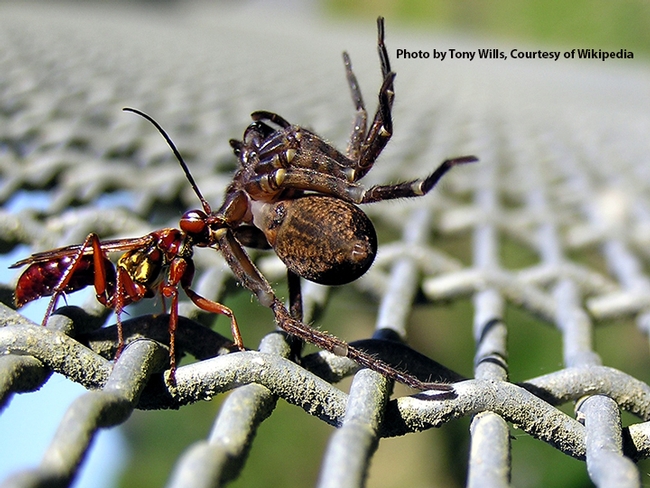
Female golden hunting wasp dragging a paralyzed spider to its nest. (Photo by Tony Wills, courtesy of Wikipedia)

Bohart Museum director Lynn Kimsey (inside truck) and husband UC Davis forensic entomologist Bob Kimsey unload the U-Haul truck. At right is Bohart research associate Brennen Dyer. Also helping are Kimsey friends, Mike Whitney (retired Placer County sheriff) and his wife, Becky. (Photo by Steve Heydon)
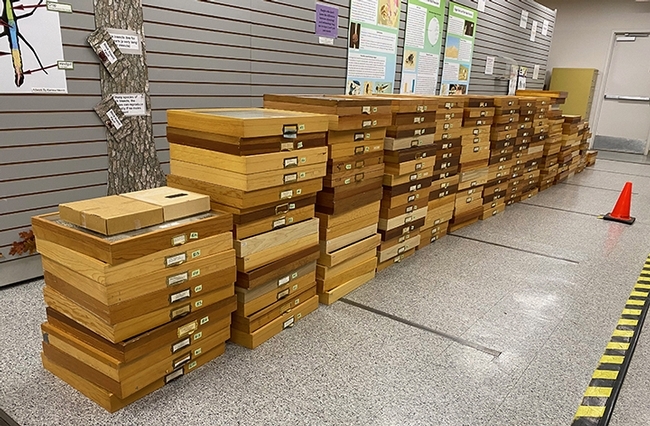
The Marius Wasbauer aculeate (stinging) wasp specimens total more than 50,000. (Photo by Steve Heydon)
Behold: A Mexican Cactus Fly on a Mexican Sunflower
It's not often you see a Mexican cactus fly, Copestylum mexicanum, nectaring on a Mexican...
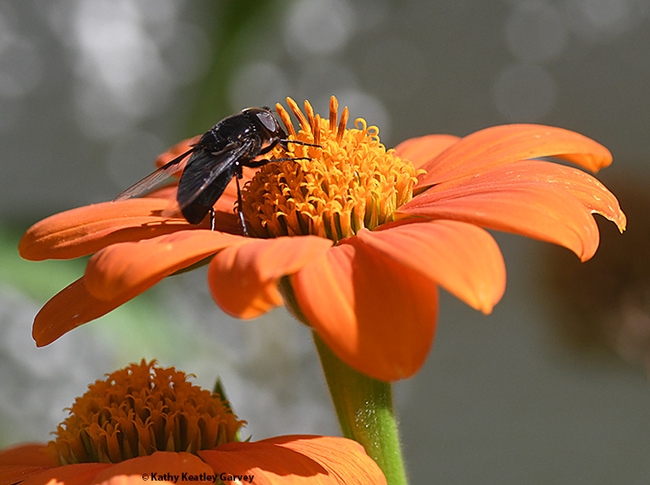
"Aah, nectar!" A Mexican cactus fly, Copestylum mexicanum, on a Mexican sunflower, Tithonia rotundifolia, in Vacaville. (Photo by Kathy Keatley Garvey)
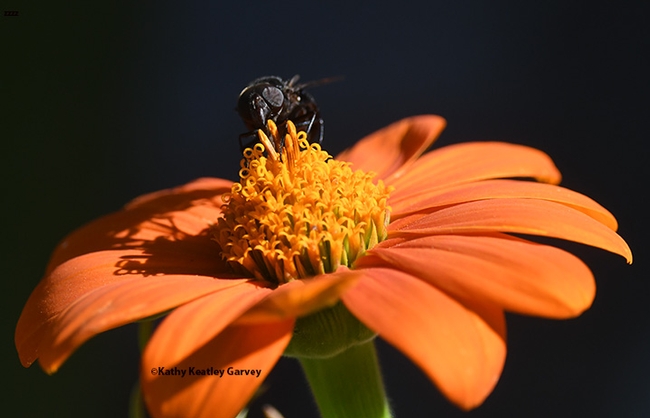
"Here's looking at you!" A Mexican cactus fly, Copestylum mexicanum, sips nectar from a Mexican sunflower, Tithonia rotundifolia, in Vacaville. (Photo by Kathy Keatley Garvey)
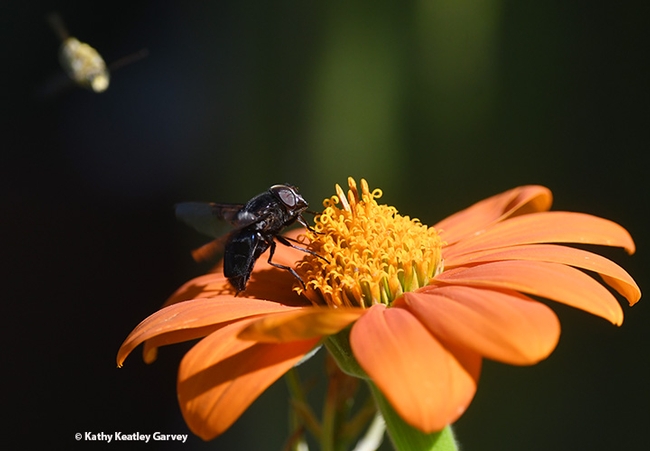
"My territory!" says a dive-bombing male longhorned bee, a Melissodes agilis, as it targets the Mexican cactus fly. (Photo by Kathy Keatley Garvey)
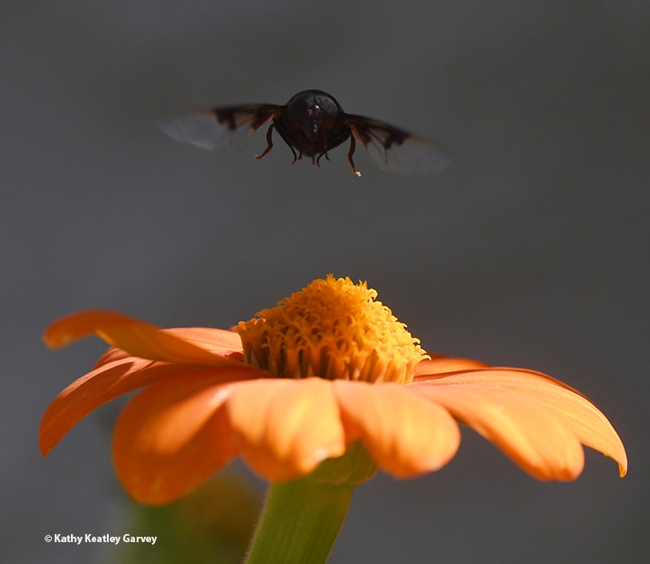
"Coming at ya!" A Mexican cactus fly sails over a Mexican sunflower. (Photo by Kathy Keatley Garvey
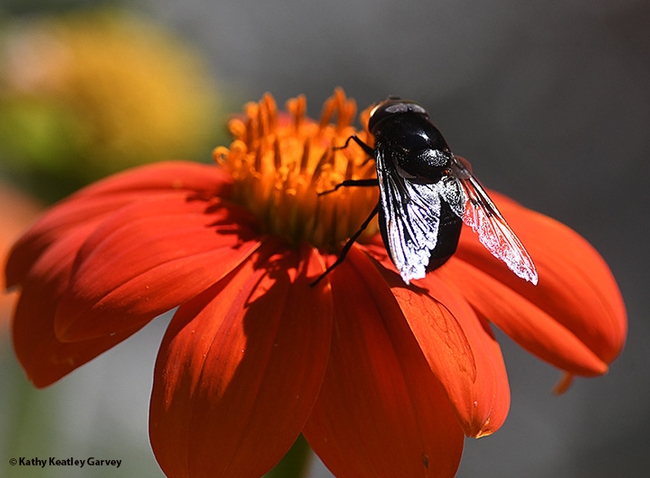
The wings of the Mexican cactus flower glisten in the morning sun. (Photo by Kathy Keatley Garvey)
Martin Hauser: 'The Curious Case of the Stingless Bees of Palo Alto'
The title is intriguing: "The Curious Case of the Stingless Bees of Palo Alto." Isn't it illegal to import stingless bees in the United States? It...
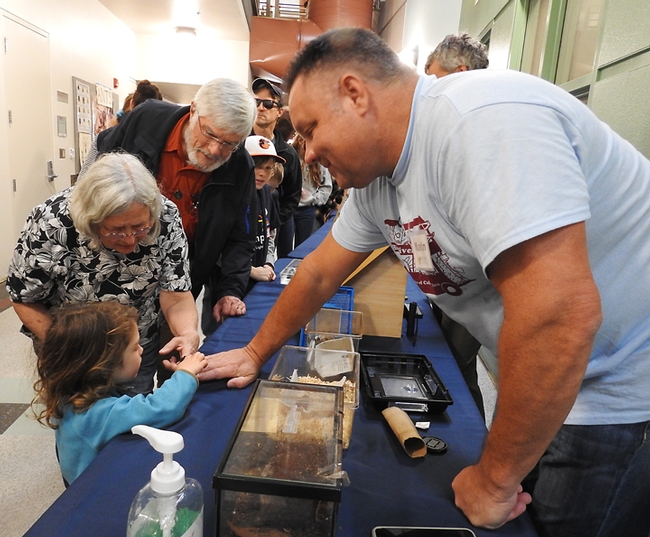
Martin Hauser of the California Department of Food and Agriculture will speak on stingless bees of Palo Alto at the Pacific Coast Entomological Society meeting on Feb. 27. Here he introduces Madagascar hissing cockroaches to Bohart Museum of Entomology guests on Feb. 15 during the UC Davis Biodiversity Museum Day. (Photo by Kathy Keatley Garvey)
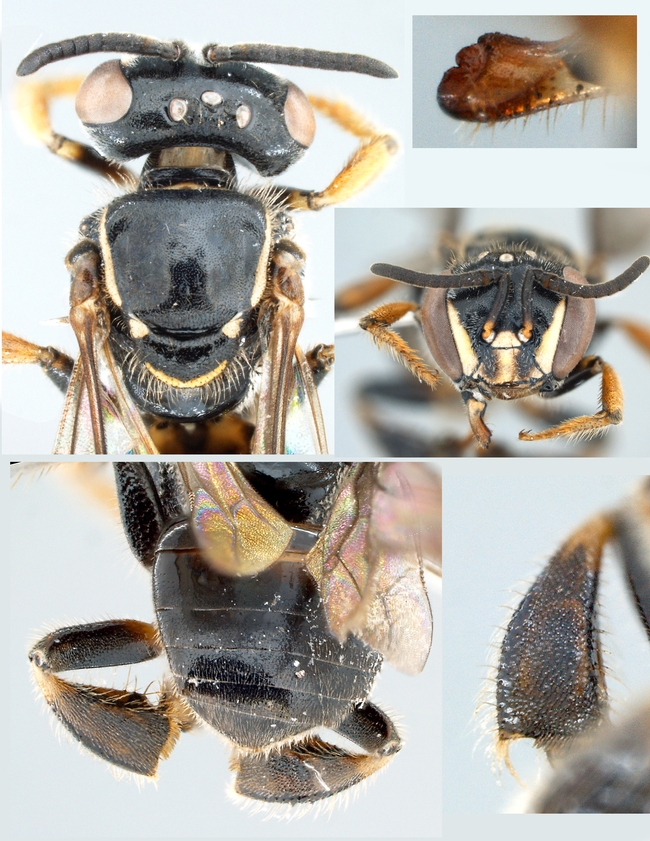
Plebeia sp (Images by Martin Hauser, California Department of Food and Agriculture)
Andrew Young: Natural History of Syrphids, from Pollinators to Parasitoids
At first glance, they're often mistaken for bees, but bees they are not. They're flies. You've probably seen them hovering over flowers, which is...
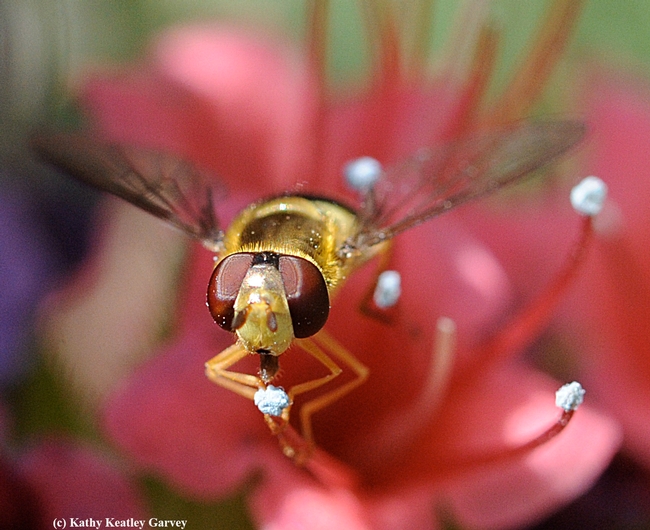
A syrphid, also known as a hover fly or flower fly, nectars on a tower of jewels, Echium wildpretii, in Vacaville, Calif. (Photo by Kathy Keatley Garvey)
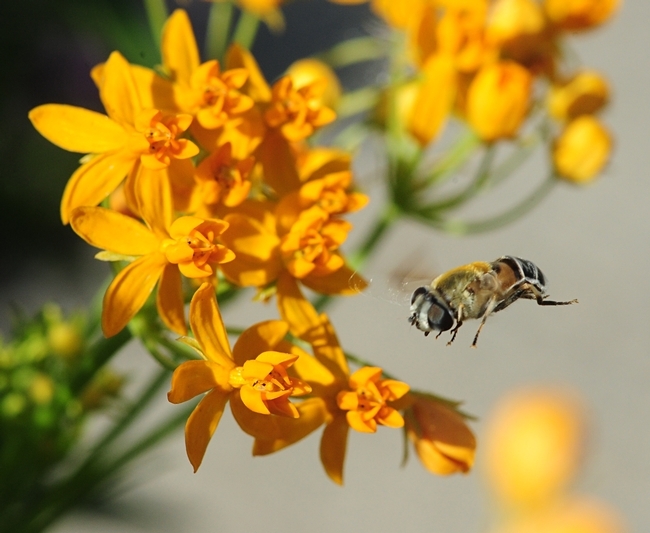
A syrphid in flight, heading toward a tropical milkweed, Asclepias curassavica. (Photo by Kathy Keatley Garvey)
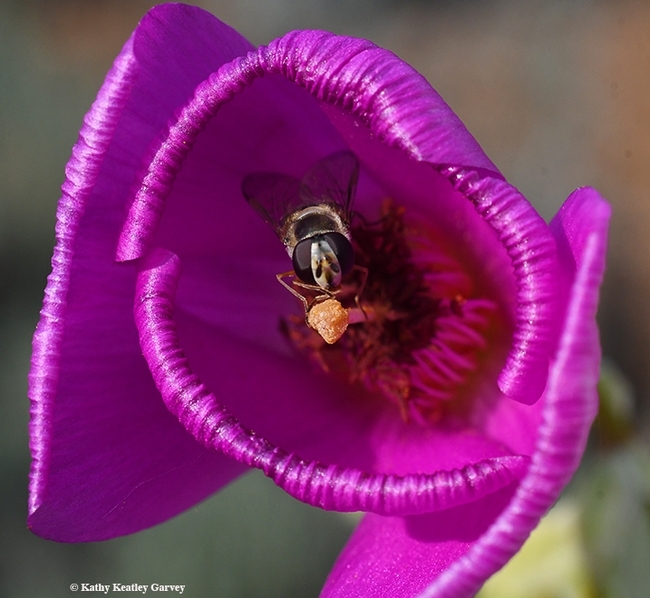
A syrphid tucked inside the petals of a rock purslane, Calandrinia grandiflora. (Photo by Kathy Keatley Garvey)
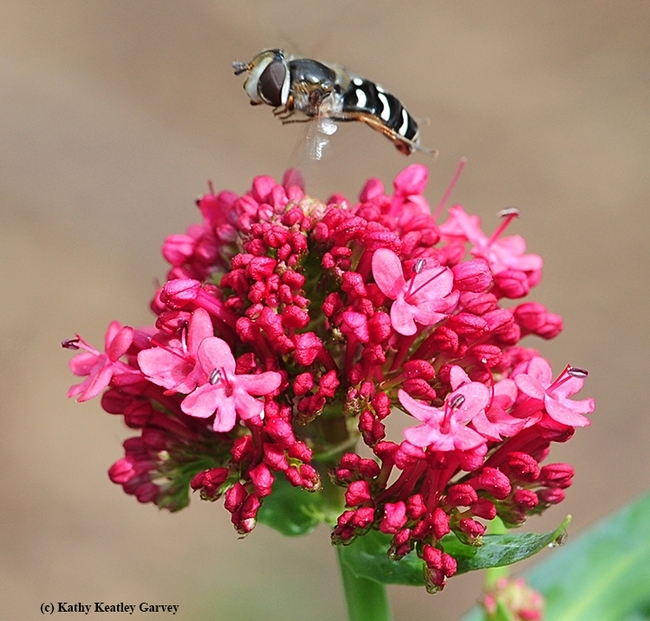
A syrphid hovers over Jupiter's Beard, Centranthus ruber. (Photo by Kathy Keatley Garvey)
Find the Green Darner
Find the green darner. Trying to spot the green darner dragonfly, Anax junius--so named because of its resemblance to a darning needle--is like...
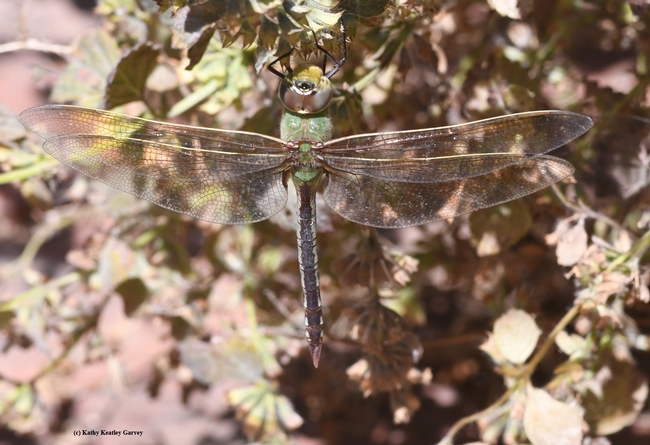
Green darner dragonfly, Anax junius, in Benicia State Historical Park. (Photo by Kathy Keatley Garvey)

